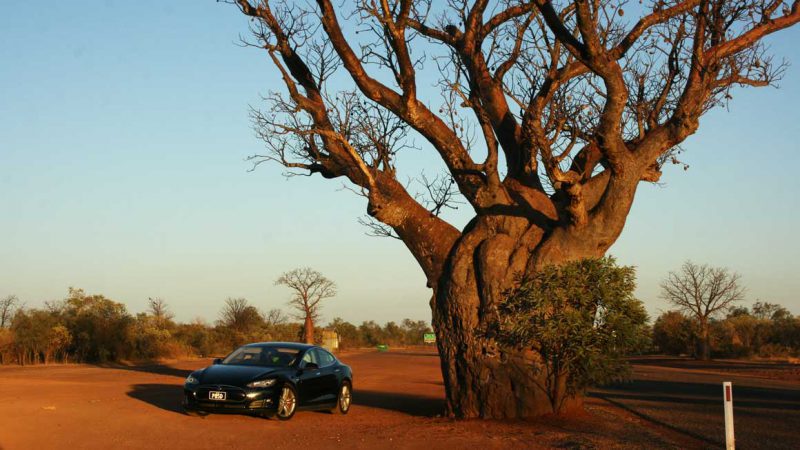New research shows that many electric vehicles are already well equipped for use in Australia’s remote and regional communities, providing sufficient range to access major service hubs.
The research has been published in the journal Australian Geographer, led by researchers from the Australian National University, and has prompted calls for a ramp-up of investment in remote and regional EV infrastructure to support uptake.
Research co-author Dr Bjorn Sturmberg of the ANU’s Battery Storage and Grid Integration Program said the findings show many electric vehicle models already have sufficient range and driving capabilities to meet the needs of those living in remote communities.
The researchers examined the driving practices of those living in Australia’s remote communities – who generally need to travel much longer distances to reach population hubs and access services.
The analysis suggests that while the distances travelled are much larger than the usual trips made by those living in major metropolitan areas, they are not so far as to prevent the trips being made using electric models, provided sufficient infrastructure was available at their destination.
It estimates that 93 per cent of the residents of remote communities could access the nearest service hub with most electric models – and 95 per cent of remote communities could access their nearest’ major’ service hub with currently available longer-range electric vehicle models.
“We analysed the distances between people’s homes and the nearest “service hub” towns – where they might go to do the shopping, for example,” Sturmberg said.
“The vast majority of residents, or 93 per cent, could do those trips with even the lower-range of electric vehicles currently available on the Australian market. That’s without needing to recharge en route.”
In the research paper, the researchers say the findings underpin the need for proactive investment in electric vehicle infrastructure for remote communities and that it would be wrong for governments and infrastructure planners to presume EVs are currently unworkable for those living outside the major population centres.
“This suggests that the barriers to EVs is not solely the oft-quoted tyranny of distance between remote towns, or the range of existing EVs, but a combination of the availability of charging infrastructure in towns, communities and en-route charging stations,” the paper says.
“Plus likely a multiplicity of more prosaic barriers including accessibility, availability and financing of EVs in remote markets, the training of technicians (and lay people) to service and repair EVs, and perceptions related to the use case of EVs in remote areas.”
Sturmberg says supporting all drivers to make the switch to electric models will help efforts to cut greenhouse gas emissions.
“The transport sector is responsible for 25 per cent of global emissions and more than 18 per cent of Australia’s greenhouse gas pollution,” he said.
“It must rapidly decarbonise – and electric vehicles are going to be a crucial part of that decarbonisation.
“We need to do better – electric vehicles shouldn’t be left in the too hard basket. It’s an unequitable and unfair path forward if remote and regional communities are the last ones left driving diesel vehicles, especially as they will be some of the most impacted by catastrophic climate change,” Sturmberg added.
“Yes, the barriers are obvious – large distances, unsealed roads. But the benefits are equally obvious. It’s difficult and expensive to get diesel out to these communities, and electric engines are simpler and more robust than fuel engines.”
Research co-author Dr Francis Markham said there remained some data gaps about road and environmental conditions in parts of Australia, and filling these gaps would help improve transport planning.
“For example, we still don’t have clear data on the impact of unsealed roads or different conditions on the effective range of electric vehicles,” Markham said.
“And information on the performance of electric vehicles in very hot conditions is still lacking. However, we are confident that electric vehicles do have a place in regional and remote Australia.”


